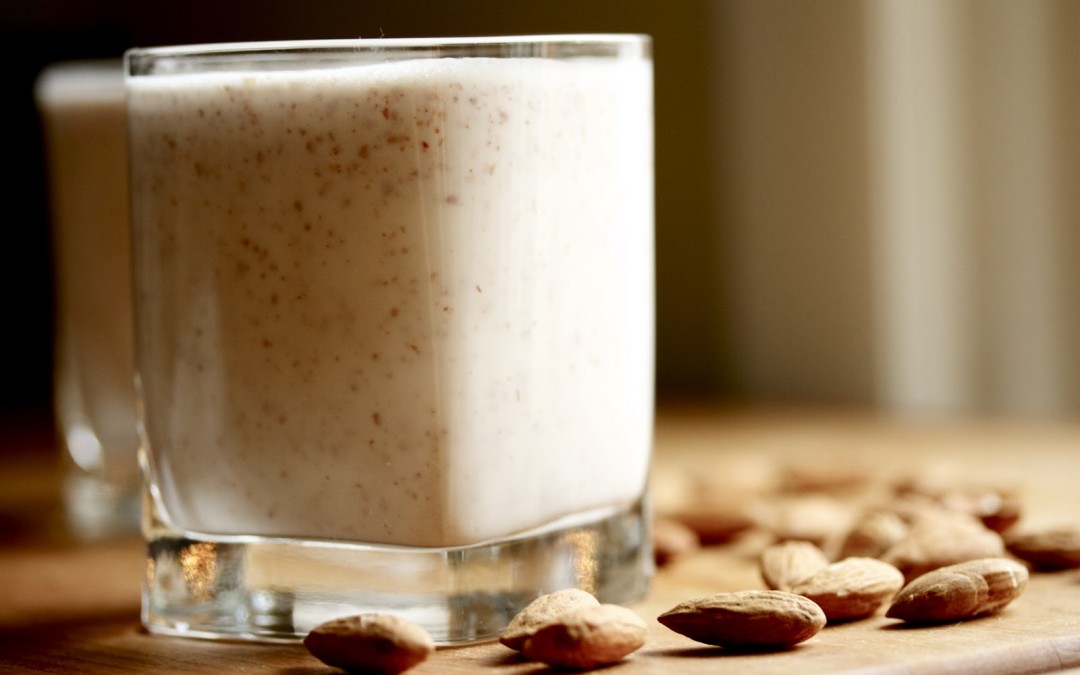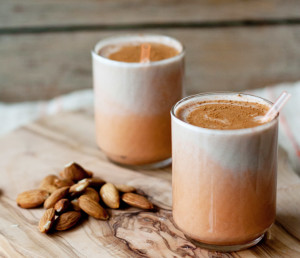Why don’t people consume dairy?
1. Some people are lactose intolerant which means their body has an inability to digest lactose, a sugar found in milk and to a lesser extent dairy products (cheese, yoghurt, butter etc), causing side effects. In most cases, symptoms include abdominal bloating and cramps, flatulence, diarrhoea, nausea, rumbling stomach or vomiting.
2. Allergic reactions to dairy
3. Dairy is considered a food that can cause inflammation in the body
4. Ethical reasons behind the production of dairy products
5. Dairy causes digestive discomfort, bloating or loose stools even though they aren’t lactose intolerant
Dairy alternatives are very popular these days and can include:
Almond Milk
Almond milk is a great substitute for milk in every aspect of cooking and baking as well as over cereal, in smoothies or in your morning coffee/cuppa. Creamy, usually just a little sweet, high in vitamin E and other essential nutrients, and more alkaline than other nuts. Almond milk is almost always found in with the other non-refrigerated boxed beverages.
You can also use other nuts such as cashews, brazil or hazelnuts as a nut milk.
These dairy-free milk alternatives are usually not soy-free however, as they almost always contain soy lecithin. You can avoid soy by making your own milk at home!
Half a cup of almonds (or other nuts) – soaked in filtered water overnight in the fridge
3 cups of filtered water
Pinch of salt
2 dates
1/4 teaspoon vanilla essence or vanilla bean
Blend on high for 1 minute in a good blender
Strain the liquid through a nut bag or clean mesh cloth
Refrigerate and consume within 3 days
You can make smaller batches if you know you’re not going to get through it all
Coconut Milk
Prepared from fresh coconut meat (flesh), coconut milk is a great option for richer dairy-free dishes. Although it is high in fat and saturated fat (their good fats!), coconut milk is a delicious way to add creaminess to any number of dairy-free dishes. I wouldn’t recommend in your tea or coffee but it goes great in curries, puddings, dairy-free whipped cream or desserts and with your cereal or granola.
Coconut meat can also be made into a yoghurt and flavoured with fruit. The yoghurt is very thick and creamy.
Rice Milk
Rice milk is generally thinner in consistency than nut milks or soy milk, and it has a lighter, sweeter flavour that is perfect for using with cereal or in coffee/tea. While rice milk works well in baking recipes, for using in dairy-free sauce recipes it generally requires some sort of binding or stabilising agent such as agar flakes, eggs, flour or anthem gum. I would recommend to use rice milk in coffee, tea, smoothies or own its own.
Soy milk
Soy milk is made from the soy bean and are a complete protein source and a dietary staple in many cultures. It is one of the richest of non-dairy milk alternatives next to coconut milk, contributing density through fat, fiber and protein while still free of cholesterol and saturated fats. Excellent for baking, cooking, in a glass or over cereal, soy milk is an easy way to add protein and dimension to your recipes.
Soy contains phytoestrogens called isoflavones that may mimic the activity of the hormone estrogen in your body. I would recommend avoiding soy if you have a tendency toward high oestrogen and if you do consume soy, go for non-genetically modified (non-GMO) and certified organic. Perhaps rice or nut milk would suit you better, or just mix it up.
Take care of you, see you in the clinic,
TK xx
Learn more > http://www.tanyakeamwellness.com


